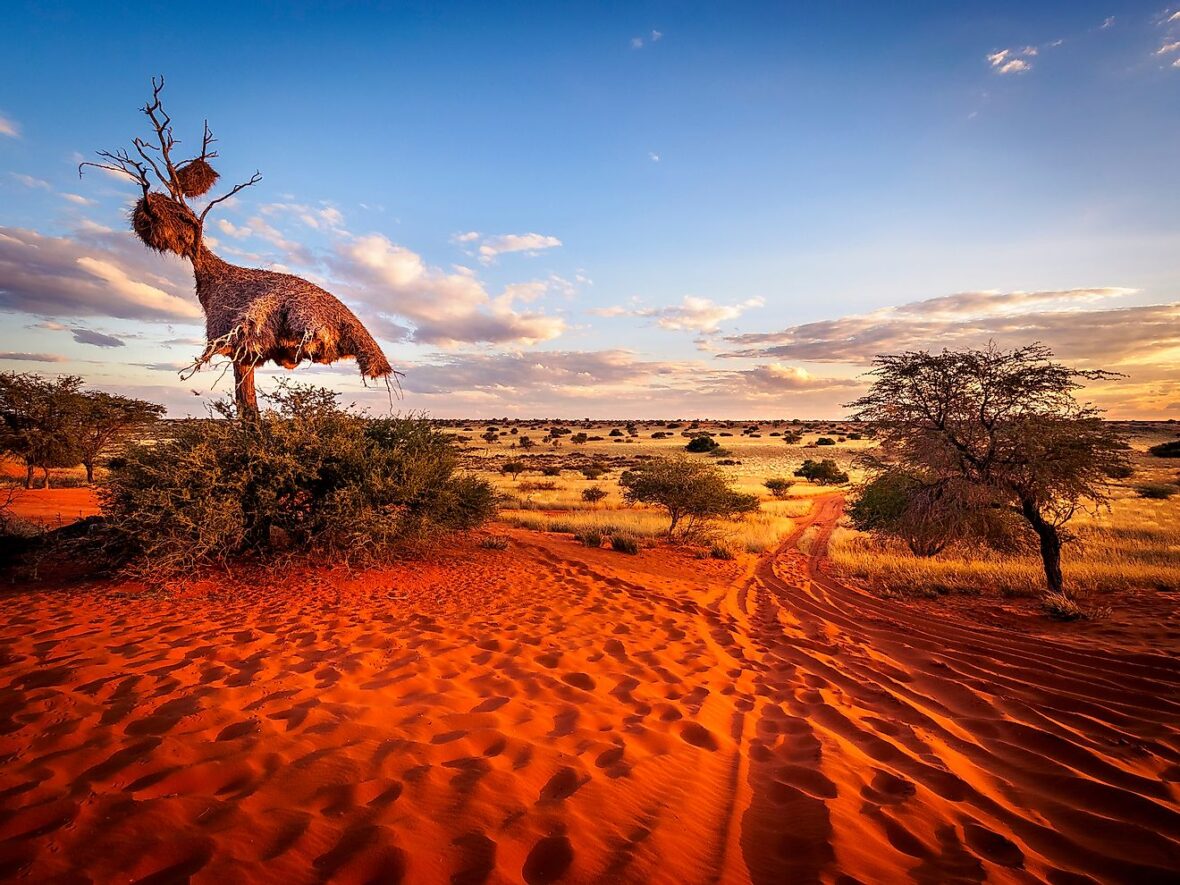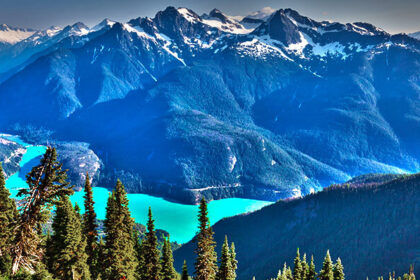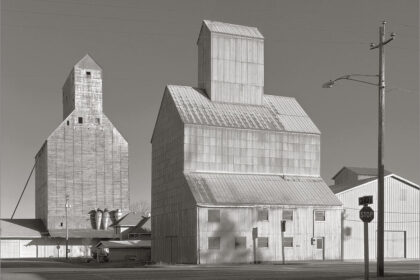Spanning much of Botswana, Namibia and South Africa, the Kalahari offers safari experiences unlike any other, with antelope, big cats, and incredible birdlife that have adapted to survive the harsh desert conditions. Take a look below for 30 interesting and incredible facts about the Kalahari Desert.
1. The Kalahari is not really a desert it’s a large semi-arid sandy savannah. Many parts of the Kalahari receive significant rainfall (over 9.8 inches / 250 mm annually) and have quite a bit of vegetation.
2. The Kalahari Desert came into existence approximately sixty million years ago along with the formation of the African continent.
3. Thousands of years ago, the Kalahari was thriving with life and there were many lakes there. Today, in the place of these lakes, large salt pans remain, as is the case of Makgadikgadi Pan, the remains of the once huge Lake Makgadikgadi. Another big pan is the Nxan pan.
4. The desert covers approximately 350,000 square miles (900,000 km2) encompassing most of Botswana and parts of Namibia and South Africa.
5. It’s the 6th biggest desert by area on Earth and the second biggest in Africa after the Sahara.
6. The entire western Kalahari Desert is characterized by long chains of dunes, oriented roughly to the north or northwest.
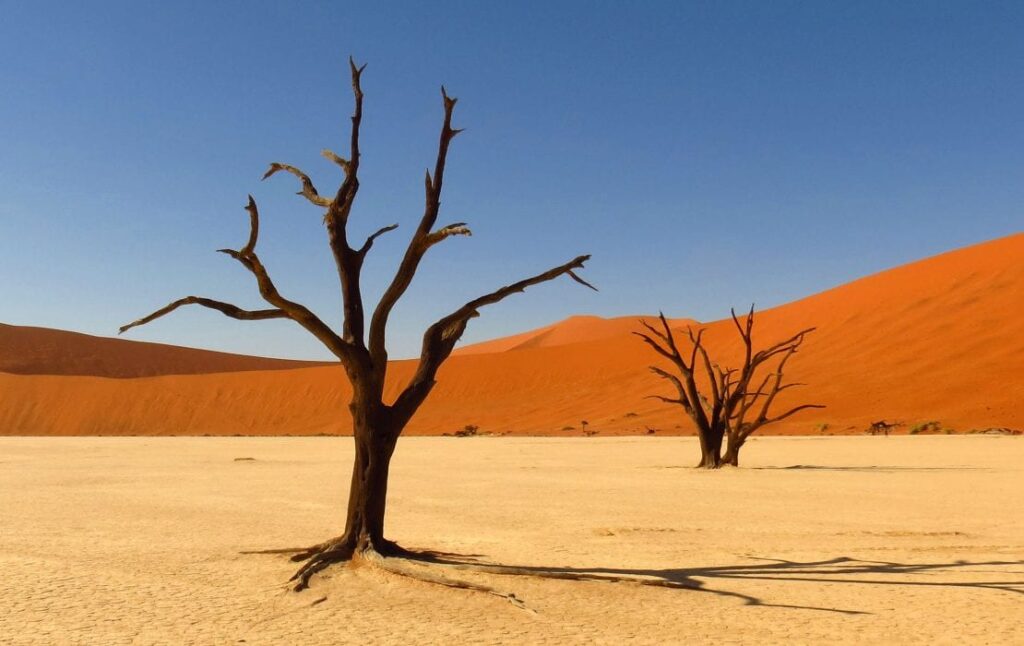
7. Unlike other deserts, the dunes in the Kalahari are not wandering.
8. The desert gets its name from the Tswana word Kgala (“the great thirst”), or Kgalagadi, Khalagari, or Kalagare, meaning “a waterless place”.
9. The Kalahari Desert has huge areas that are good for grazing and support more animals than are found in a true desert.
10. The Kalahari has several game reserves and other conservation areas. The reserves include the Central Kalahari Game Reserve (The second-largest protected area in the world), Khutse Game Reserve, and the Kgalagadi Transfrontier Park.
11. The Central Kalahari Game reserve which is Adjacent to Khutse reserve in the country of Botswana is one of the Kalahari places that are extremely interesting and it is worth a visit on an African safari.
12. The introduction of motor vehicles in the 20th century greatly improved transport into the Kalahari, but even as late as the 1950s large areas were virtually inaccessible and were never visited by outsiders.
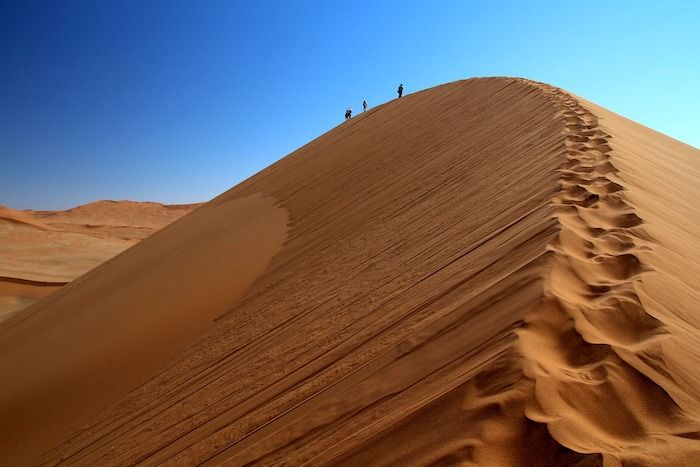
13. The Kalahari gets very hot. It can reach temperatures of 40 degrees Celsius (104 degrees Fahrenheit) in the summer. In winter the desert has a dry, cold climate where the temperature can reach 0 degrees Celsius (32 degrees Fahrenheit).
14. The Okavango River is the only permanent river that flows through the desert. During the rainy season (October through April) temporary rivers such as the Nata and several tributaries that flow into the Limpopo River are formed.
15. Even though survival in the Kalahari Desert can be challenging several tribes make it their home. These tribes include the San (San Bushmen), Kung, Khomani, Khios (Hottentots people), Nama (or Namaqua), and Griqua people.
16. A small number of Europeans also live in the Kalahari.
17. Europeans first entered the Kalahari early in the 19th century as travellers, missionaries, ivory hunters, and traders.
18. The San Bushmen have lived in the Kalahari for approximately twenty thousand years and are considered to be the oldest culture in the world. A small group of these people still follow the traditional lifestyle as hunter-gatherers, as their tribe has done for thousands of years.
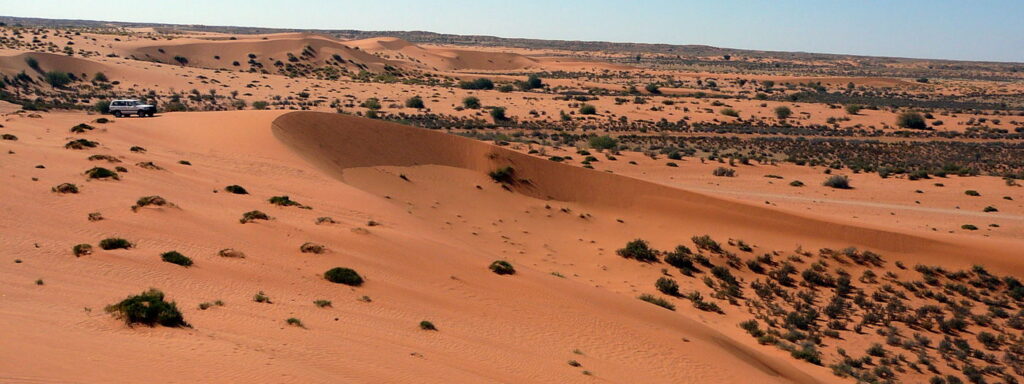
19. Many visitors to the Kalahari Desert take part in guided walks with the local San Bushmen. With their depth of knowledge of the local area and their hunter-gatherer lifestyle, to learn about their cultures and traditions is a must.
20. The Taa language, spoken by less than 5,000 people in the Kalahari Desert is the language with the most vowels and consonants.
21. One of the most common Kalahari animals is the Gemsbok/Oryx (Oryx gazelle). This animal is well equipped for survival in the extremely rough conditions of the desert.
22. Many of the world’s most dangerous cats can be found in parts of the Kalahari. These include lions, leopards, cheetahs, and caracals.
23. Another animal found in this region is the eland (Taurotragus Oryx). It is the largest of all the African antelope. They can weigh up to 1985 pounds (900 kg).
24. The desert is the home to some amphibious animals. These include the bushveldt rain frog and the tremolo sand frog that live in the southern Kalahari where there is a long rainy season.
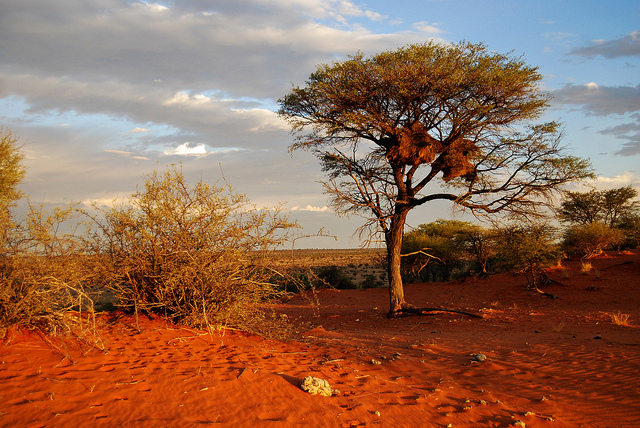
25. Over four hundred species of plants have been identified in the Kalahari Desert.
26. Hoodia is a plant that is used all around the world in diet pills and supplements because of its hunger-suppressing properties. This plant grows only in Southern Africa and the Kalahari Desert region and it is said that the San people can go 24 hours without feeling any hunger after consuming it.
27. The Kalahari’s sand is better than most deserts at retaining water and therefore allows for more plant life than most deserts.
28. The Kalahari Desert is home to one of the biggest diamond mines in the world.
29. Diamonds were discovered around 30 years ago in the Kalahari and the Gaghoo Mine first opened in 2014, after a 3-year construction project.
30. Not only can diamonds be found in the Kalahari, but this semi-arid desert is also rich in other valuable minerals such as nickel, copper, and coal.

